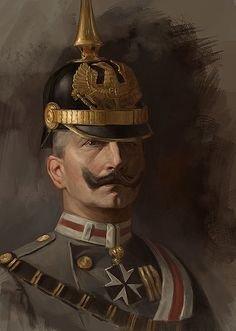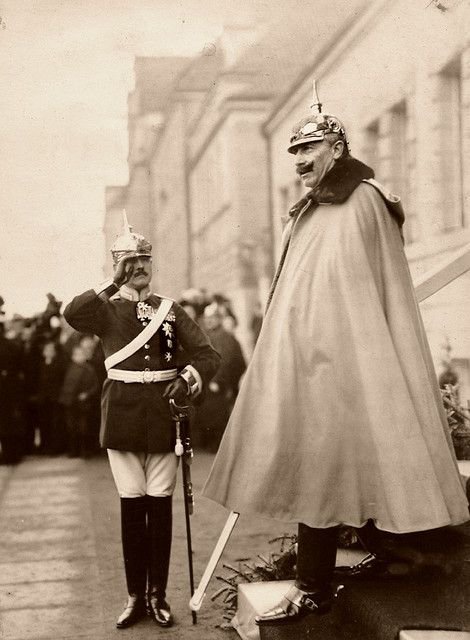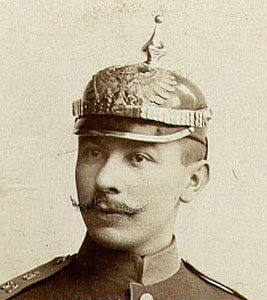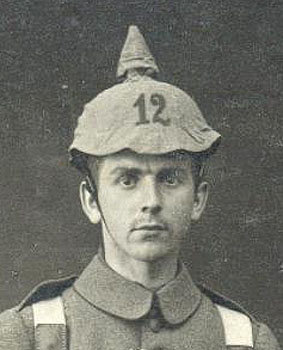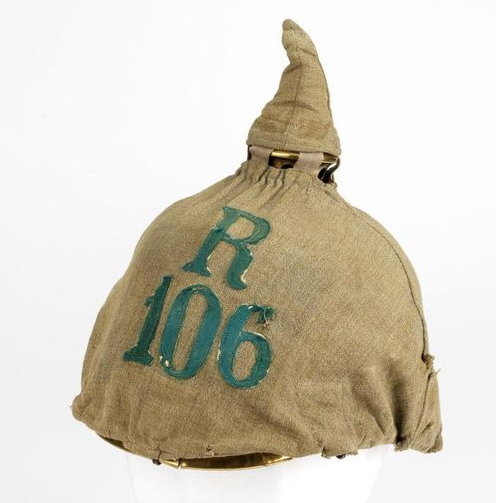This blogger recently wrote about finding a Dior couture dress in a box of clothes that had been used for dress-up and Halloween costumes. The contents of that box and three others date from 1860 – 1960. One of the more unusual items in one box was this German helmet.
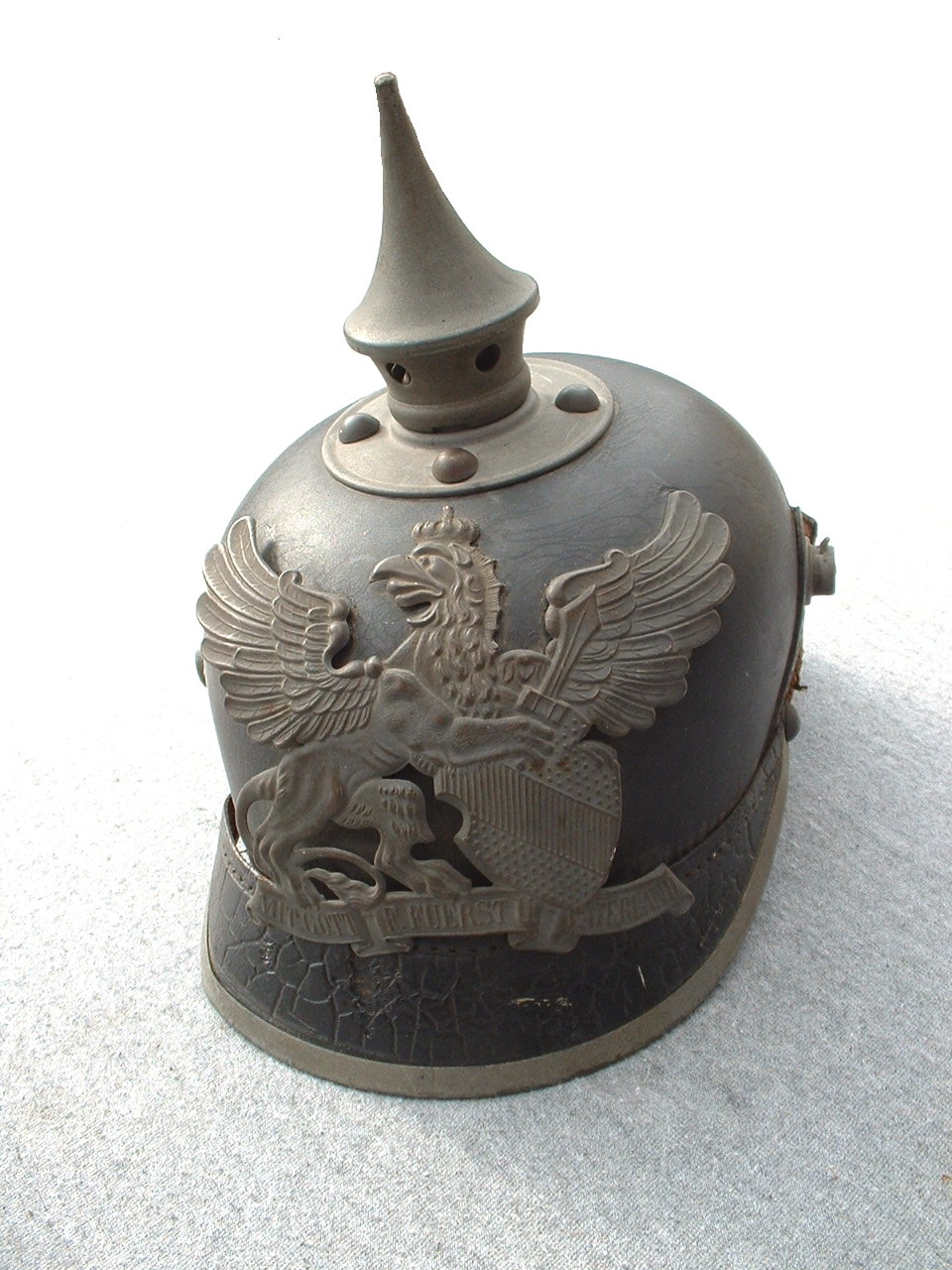
I know very little about militaria, but I did realize that this spiked helmet (or pickelhaube) was used by the Germans in WWI , “The Great War.” Researching this helmet on the internet was fun and fascinating. There are a number of sites dedicated to just this style of helmet.
While the pickelhaube will forever be associated with the armies of Kaiser Wilhelm II (left), it was originally designed in 1842 by Friedrich Wilhelm IV, the king of Prussia. (In 1856 he was judged to be insane). After Prussia defeated France in the Franco-German War of 1870-71 and became the dominant army in Europe, other countries adopted the spike helmet look, including the US! (BELOW)
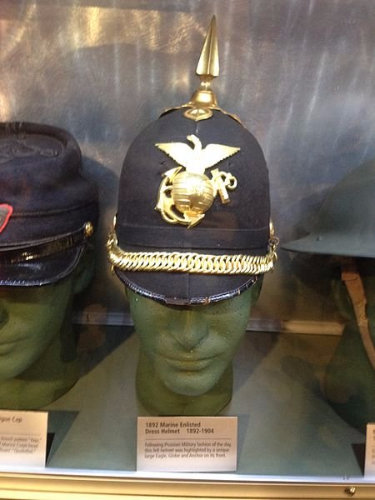
US Marine Corps helmet 1881 – 1902
The spike worn on the top of the German helmet represented the spear used by ancient warriors. The artillery version of these helmets has a ball top which symbolizes the cannon balls used by the first artillery regiments. Aside from the spike finial, the most recognizable feature of the Pickelhaube was the ornamental front plate, which denoted the regiment’s province or state. My helmet’s plate design represents the German state of Baden.
The pickelhaube was not just for the military. This style of helmet could be found worn by the German police, fire department and other civil associations, such as the “land custom official.” (Below)
As is the case with all other vintage clothing and accessories one sells, condition is paramount with these helmets and mine (below) has plenty of wear. The chin strap and other pieces are missing and the lining has seen better days.
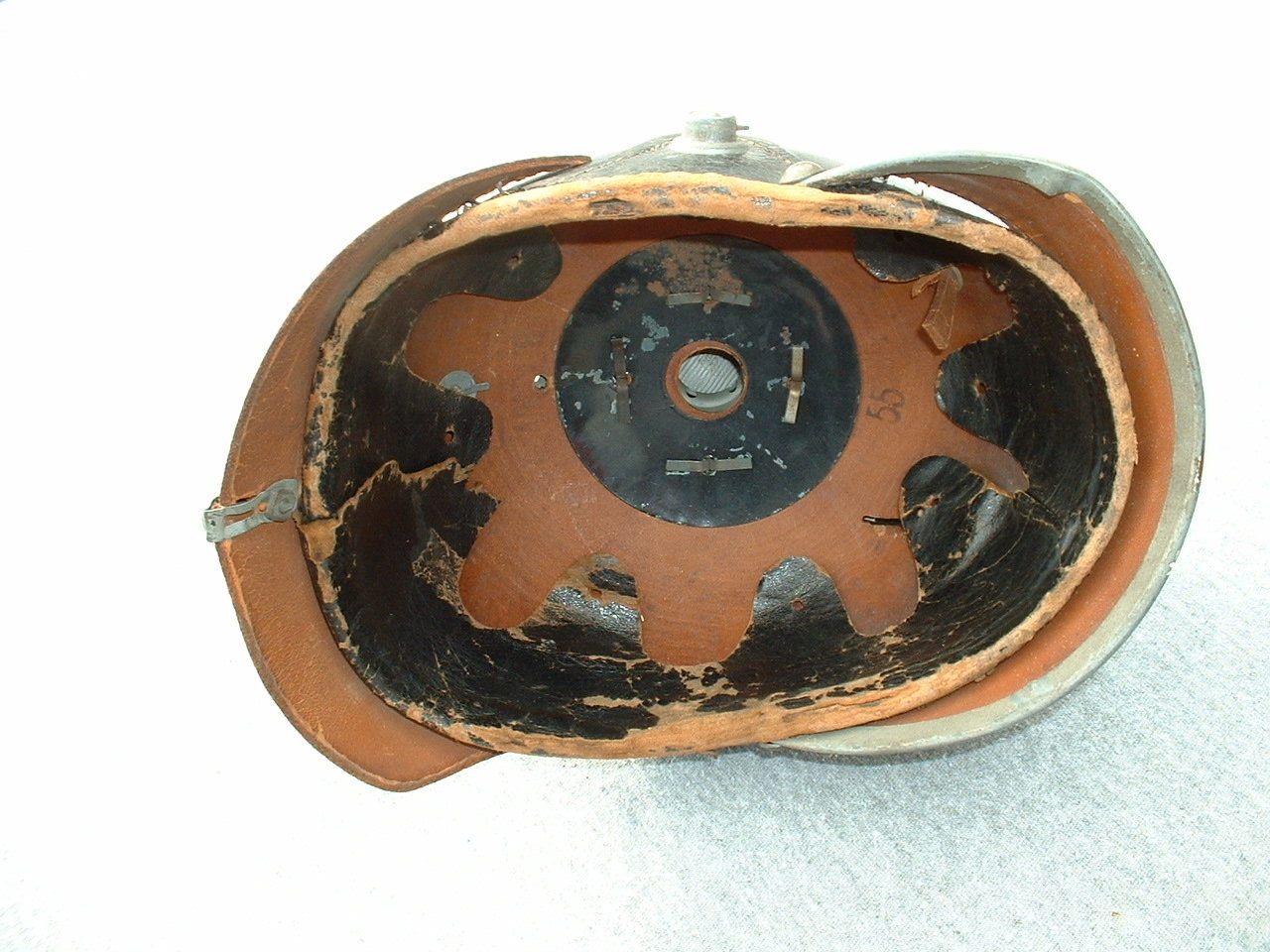
Besides condition, two other things that increase the value of these helmets are if the soldier’s name is written on the inside and if it is made of steel. All helmets produced for the infantry before and during 1914 were made of leather. As the war entered its second year, leather became scarce in Germany so manufacturers began to produce the helmet using everything from treated felt to sheet metal. Even papier mache was used as a substitute.
My helmet was very small (marked 55) and would never fit on my average-sized head. I asked in “the Great War Forum” if perhaps it was made for a boy. “Bear in mind that men were smaller in the early part of the 20th century,” I was told. Another responder wrote: “The size 55 is a pretty average adult sizing for the WWI period and in no way indicates this was made for a child.”
The brass and silver fittings on these helmets proved to be highly reflective and were a liability in the field. When the German army invaded France and Belgium in 1914 all the troops wore a cloth cover (below) over their pickelhaube. It was meant to protect the helmet from dirt and reduce its combat visibility.
A simplified helmet with a detachable spike was introduced and in September 1915 it was ordered that the new helmets were to be worn without spikes when in the front line. Pickelhaubes would no longer use brass or silver.
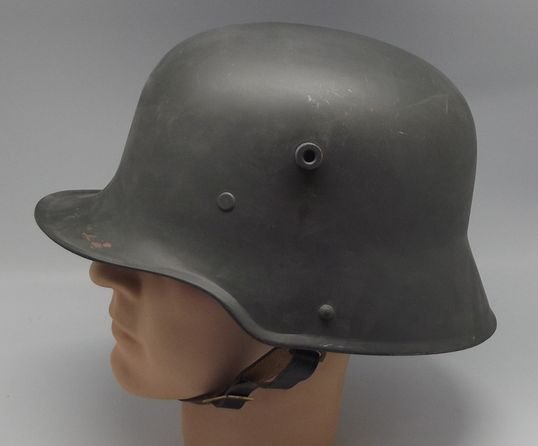
The army soon recognized that its famous helmet was better suited for parade dress than for the front lines. The leather offered virtually no protection against shell fragments and shrapnel. Beginning in 1916, the Pickelhaube was slowly replaced by a new German steel helmet. This helmet decreased German head wound fatalities by 70%.
The pickelhaube was the most sought after “war souvenir” by Allied troops. At the end of the War the US military captured warehouses full of these helmets. They were shipped back to the States and used as prizes for selling war bonds. Below is a celebration in New York City using pickelhaubes to build a pyramid.
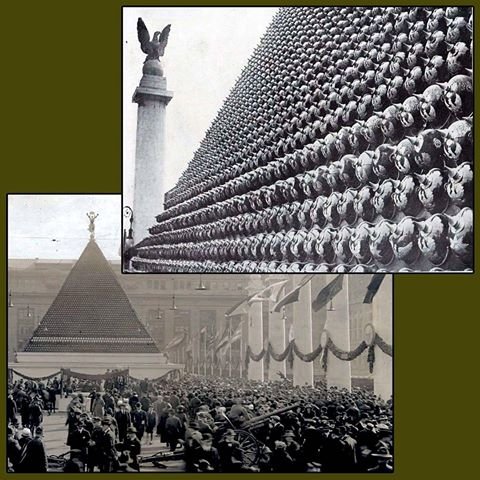
A big thank you to members of “The Great War Forum” http://1914-1918.invisionzone.com
where many of my questions were generously answered.
I also got great information from Brian Loree of picklehaubes.com. and from pickelhauben.net and www.kaisersbunker.com.
